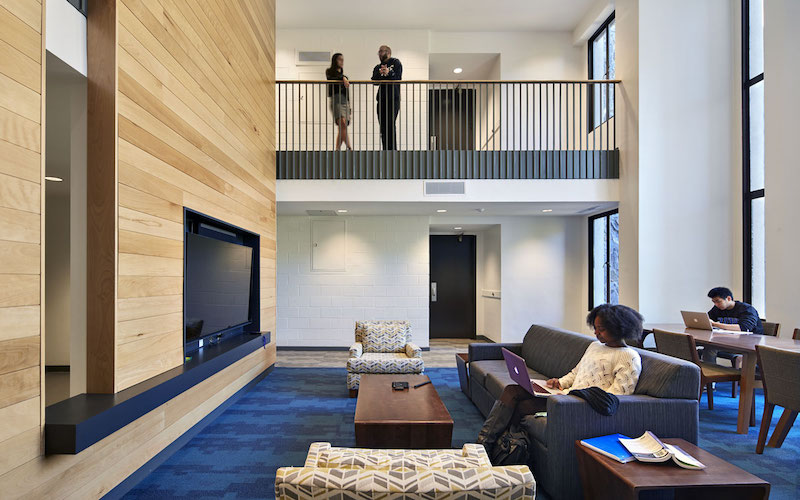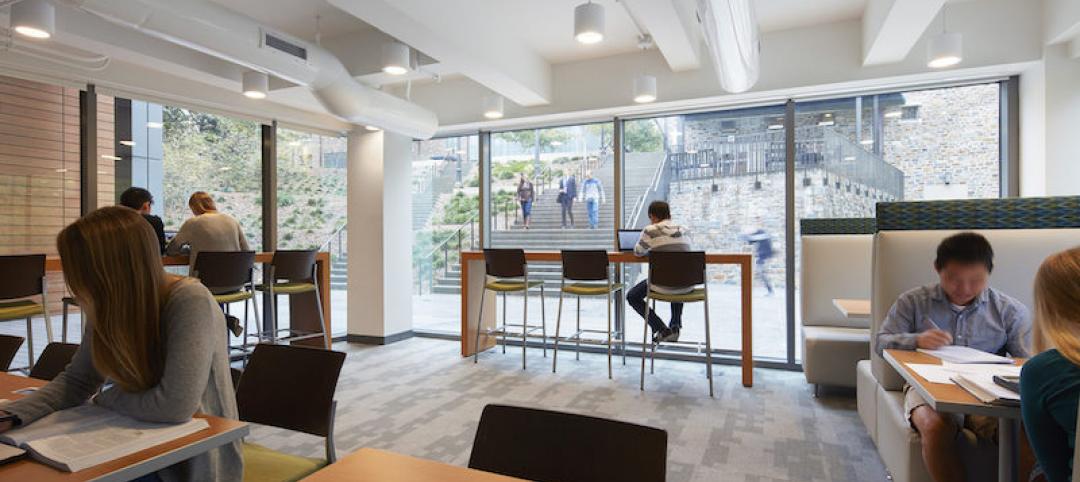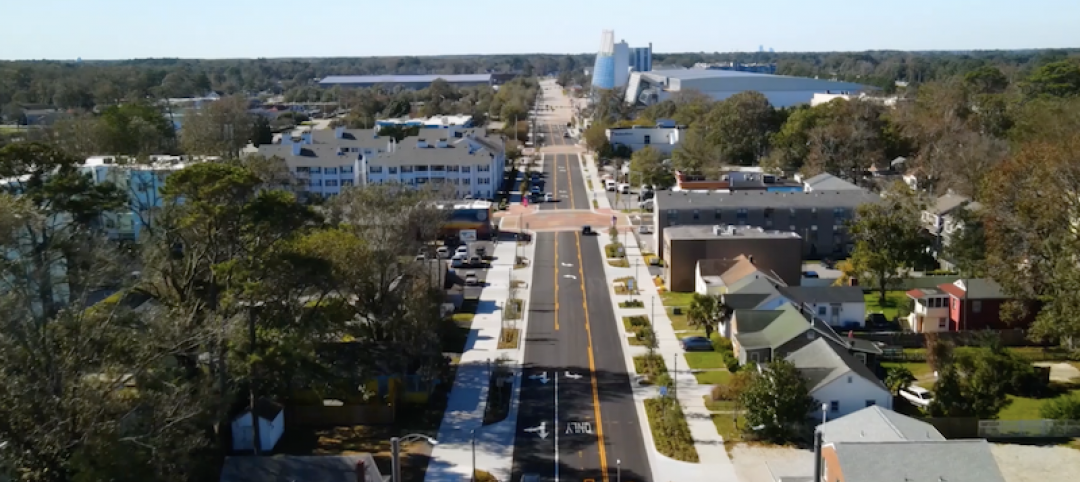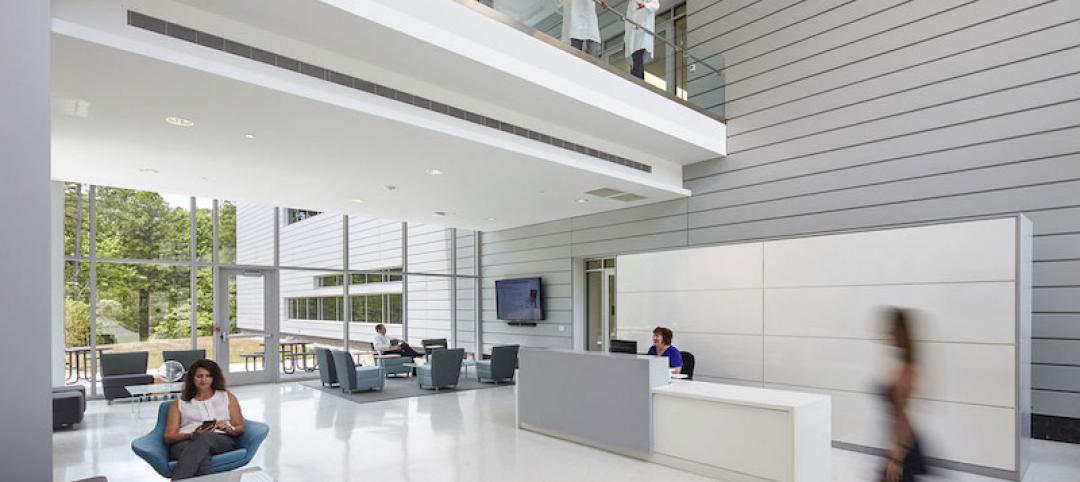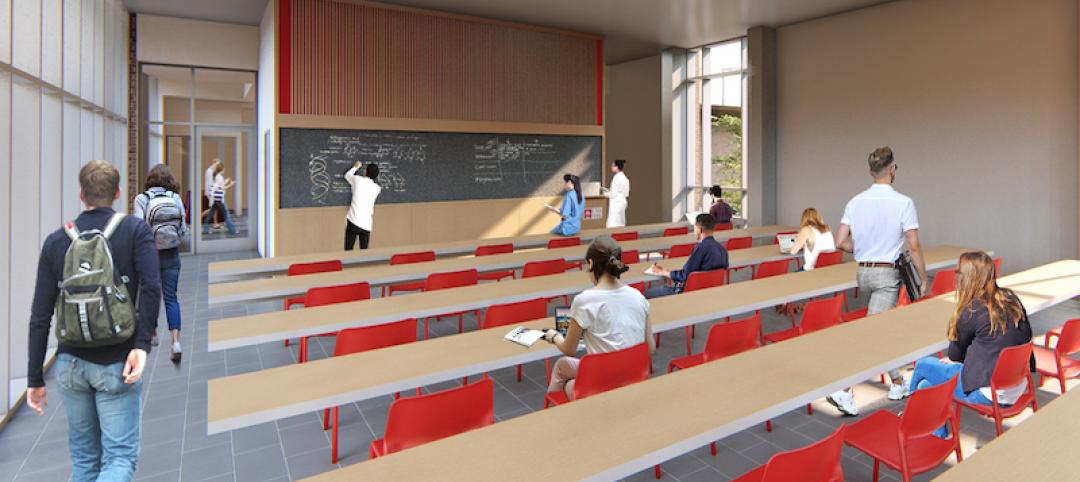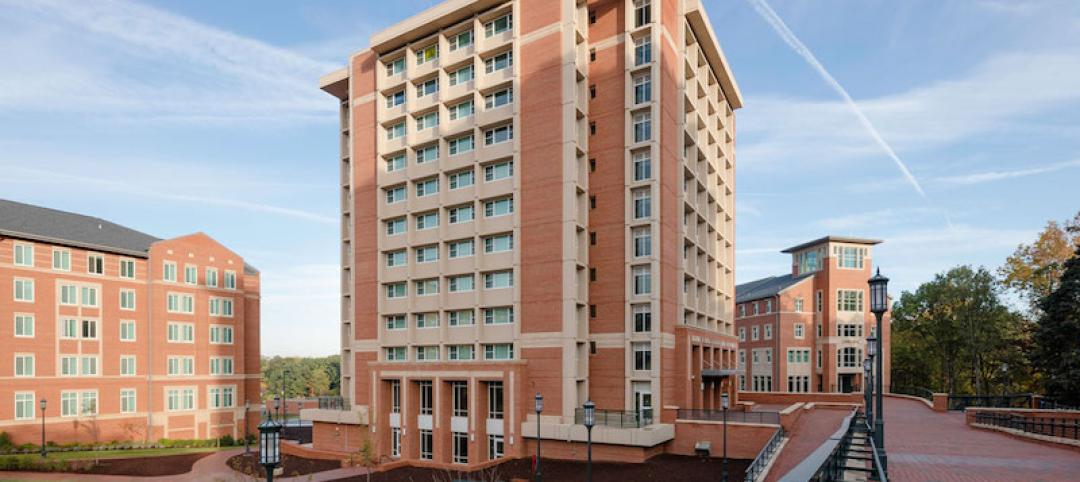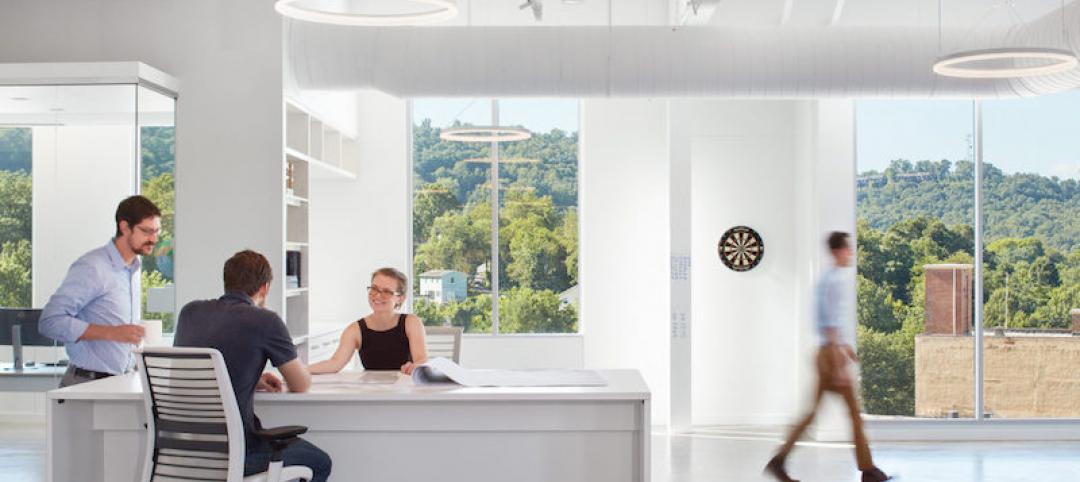As universities strive to offer student housing that aligns with the expectations of contemporary students, many are faced with the need to renovate or replace existing residence halls to provide a modern array of amenities. COVID-19 has further complicated these capital project decisions, constricting budgets for private and public institutions.
Much of the student housing in need of renovation today was built for the “boomer” generation of the 1950s and 1960s. Facility design for this generation was more pragmatic than anything, with a large portion of new buildings constructed simply to accommodate the large influx of students. These buildings were generally made with concrete or steel frame structures and built to maximize space. Today, although they have held up physically, the systems, finishes, and furnishings have reached the end of their life cycle.
These renovations can range widely from ‘systems renovations’ (addressing the mechanical, electrical, telecommunication, and even structural systems) to more comprehensive approaches that enhance bathrooms, lobbies, and community areas and upgrade finishes. Comprehensive renovation can fully transform the residential setting for students and reinforce the campus community, delivering on institutional goals for student life.
In addition to its positive impact on the student experience, renovation offers several key benefits in areas including cost, schedule, sustainability, historic preservation, and campus compatibility.
Reducing Cost and Schedule
Perhaps one the greatest advantages of renovation is its ability to reduce costs and shorten project timelines. Assuming the building structure is sound, the cost of a comprehensive renovation is generally 70 to 75% the cost of new construction, because the site preparation, structure, and sometimes building envelope can be retained. For example, at Penn State University, we simultaneously worked on a comprehensive renovation of South Halls (left) and the new construction of Chace Hall (right).
South Halls consisted of four steel frame, 254-bed residence halls built in 1958, while Chace Hall is a new steel frame residence hall. Both projects were completed at the same time, designed by Clark Nexsen and constructed by Barton Malow Company, utilizing the same subcontractors. Overall, the new construction project cost 32% more per square foot and 27% more per bed than the comprehensive renovation project.
In addition to the “hard” cost of demolition, site preparation, and new building construction, time is another reason universities choose renovation over new construction. Depending on the level of abatement or demolition required, site preparation can take anywhere from three to six months. The construction of a new structure and building envelope can also take three to six months, depending on the choice of systems. Tacking on as much as a year or more to the construction schedule adds the “soft” but very real cost of lost revenue (xxx beds x $x,xxx cost per bed) and construction cost escalation (3% to 7% per year, depending on the region of the country). In a nutshell, renovation gets beds online faster without sacrificing the student experience.
Adding & Enhancing Amenities
Most older residence halls lack the amenities that appeal to today’s students. If those amenities do exist, their design, finishes, and technology is typically in need of an update. Built in the 1950s to serve freshmen students, Bonnycastle Hall is part of the McCormick Road Houses complex at the University of Virginia. Prior to their renovation, the buildings lacked many of the amenities and creature comforts found in newer residence halls on UVA’s campus. New interior finishes and an emphasis on transparency and daylighting create a contemporary aesthetic and make the space more attractive to students.
Improving Sustainability
It’s been said that the most sustainable building is the one you don’t build—which is another plus in the renovation column. By renovating, you are saving energy in a variety of ways: the embodied energy in the original structure, the energy used to demolish it, and new energy and materials to rebuild from scratch. The Bonnycastle Hall renovation, for example, reused 90% of the existing structure and building envelope, in addition to adding insulation, new windows, and energy efficient systems.
The result is a LEED Silver certified building that has driven energy consumption down by nearly 50% compared to a baseline renovation. New plumbing fixtures also provide a significant reduction in potable water usage.
Supporting Campus Compatibility
As relatively young campuses like the University of North Carolina at Charlotte mature and develop campus standards in architecture, residence halls with sound concrete structure and significant bed count in the “too big to fail” category are receiving exterior upgrades. These upgrades aim to reinforce campus identity by creating a more consistent aesthetic, whether that aesthetic is traditional or more modern.
Preserving Historic Buildings
In contrast to the necessary renovation or replacement of post-World War II buildings found on campuses across the country, many pre-war buildings have significant historic value and architectural merit. Unlike the post-war buildings, which were built for economy and often had very low floor-to-floor heights, the pre-war buildings had both significant architectural character and higher floor-to-floor dimensions, allowing for more graceful integration of new mechanical, electrical, plumbing, and fire protection systems.
Duke University’s West Campus is a great example of some of the best Collegiate Gothic campus architecture in the country. The renovation of the Craven and Crowell Quads sought to transform the interior student experience while preserving the iconic exterior architecture.
Whether the goal is to provide new amenities or repurpose an entire facility, there is no one-size-fits-all formula that should guide universities to renovate versus build new. New construction offers considerable freedom and value, but renovation can deliver meaningful results with cost and schedule efficiencies. For every building under consideration for renovation, a feasibility study is instrumental in defining the opportunities and constraints of renovation and will help determine the best course of action.
More from Author
Clark Nexsen | Oct 2, 2023
4 design strategies for successful K-12 magnet schools
Clark Nexsen's Donna Francis, AIA, Principal, and Becky Brady, AIA, share four reasons why diverse K-12 magnet schools require diverse design.
Clark Nexsen | May 17, 2023
Designing K-12 schools for students and safety
While bullying, mental health, and other acts of violence are all too common in schools today, designers have shown that smart and subtle preventive steps can make a big difference. Clark Nexsen’s Becky Brady shares how prevention and taking action at the design level can create safe and engaging learning environments.
Clark Nexsen | Jul 1, 2022
How to apply WELL for better design outcomes
The International WELL Building Institute (IWBI) cites attracting top talent, increasing productivity, and improving environmental, social or governance (ESG) performance as key outcomes of leveraging tools like their WELL Building Standard to develop healthier environments.
Clark Nexsen | Jun 3, 2021
What's next for workplace design?
Balancing personal space and the need for collaboration.
Clark Nexsen | Apr 1, 2021
The changing face of freshman and sophomore student housing
As part of a surge in new housing projects for freshman and sophomores, we are seeing increasing demand for double occupancy rooms and suite-style arrangements in both new construction and renovation projects.
Clark Nexsen | Feb 17, 2021
Best practices for streetscape design that cultivates community
Well-designed streetscapes provide a wealth of benefits for their respective communities.
Clark Nexsen | Oct 20, 2020
Best practices in S+T office design
Within the constraints of the typical COVID-19 office protocols, lab users face the additional challenge of working with hands-on processes, tight schedules, and shared resources.
Clark Nexsen | Jun 2, 2020
COVID-19 and teaching the next generation of nurses
COVID-19 hasn’t just upended healthcare delivery, the workplace, and all levels of education – the economic toll is still being realized – and capital projects on college and university campuses will inevitably be impacted as public and privately funded projects adjust to the budget crunch.
Clark Nexsen | Apr 13, 2020
The role of higher education housing in fighting COVID-19
Distance learning, remote work, and the need for emergency medical facilities may forever change the way these spaces are designed and used – and a new emphasis on serving the community, regardless of primary function, has emerged.
Clark Nexsen | Jul 12, 2019
How Millennials, Gen Z, and technology are changing workplace design
In the workplace, the only constant is change.

